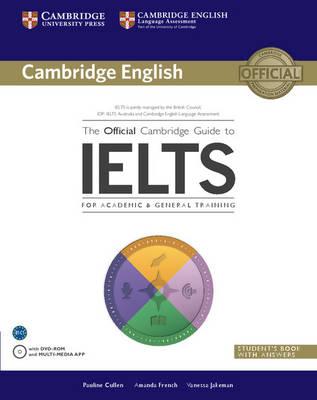English
- استرجاع مجاني وسهل
- أفضل العروض
Handbook on the Physics and Chemistry of Rare Earths Hardcover English by GSCHNEIDNER - 1995
الآن:
1343.40 د.إ.شامل ضريبة القيمة المضافة
 توصيل مجاني
توصيل مجاني باقي 1 وحدات في المخزون
باقي 1 وحدات في المخزون توصيل مجاني
توصيل مجاني باقي 1 وحدات في المخزون
باقي 1 وحدات في المخزون
احصل عليه خلال 12 ديسمبر

احصل على د.إ. 67.17 رصيد مسترجع باستخدام بطاقة بنك المشرق نون الائتمانية. اشترك الآن. قدّم الحين

ادفع على 4 دفعات بدون فوائد بقيمة ٣٣٥٫٨٥ د.إ.اعرف المزيد

قسمها على 4 دفعات ب ٣٣٥٫٨٥ د.إ. بدون فوائد أو رسوم تأخير.اعرف المزيد




1
توصيل مجاني لنقطة نون ومراكز الاستلام
معرفة المزيد
إرجاع سهل لكل المنتجات في هذا العرض.

المنتج كما في الوصف
50%
شريك لنون منذ
2+ سنين
أحدث التقييمات الإيجابية
المواصفات
| الناشر | Elsevier |
| رقم الكتاب المعياري الدولي 13 | 9780444821782 |
| رقم الكتاب المعياري الدولي 10 | 0444821783 |
| اللغة | الإنجليزية |
| وصف الكتاب | The contributions to this volume focus on selected chemical aspects of rare-earth materials. The topics covered range from a basic treatment of crystalline electric-field effects and chemical interactions in organic solvents, to separation processes, electrochemical beaviors which impact corrosion, oxidation resistance, chemical energy storage and sensor technology, and to analytical procedures.Underlying the most subtle chemical and optical properties of these elements and their compounds in the condensed state are the crystal field effects. This phenomenon in non-metallic compounds is discussed in chapter six. The volume opens with a review of important new solvent extraction procedures as well as emerging alternative separation processes such as photochemical separation, precipitation stripping and supercritical extraction. Scientific and industrial procedures are illustrated. In a further chapter eight major analytical techniques of obtaining accurate trace analysis are examined, tabulated and assessed. The most effective procedures of each are also reviewed. Chapter two considers a wide variety of methods using rare-earth solutions and slats to modify advantageously the costly deterioration of metals and alloys. This topic is expanded in the following chapter, paying particular attention to protection against high-temperature oxidation, sulfidization and hot-salt corrosion. The following two chapters are concerned with the versatility of the rare earths in addressing current technical problems such the use of rare-earth intermetallics, principally LaNi3-based materials, to provide the skyrocketing need for environmetally friendly, usually portable, battery power. The final chapter is a review of the solvation, interaction and coordination of rare-earth salts in a variety of organic solvents including dimethylacetamide, dimethylsulfoxide, various alcohols, acetonitrile and propylenecarbonate under strict anhydrous conditions. A contrast of these interactions with those in which water is present with organic solvents is also made.From the Back Cover: In keeping with the tradition of the Handbook, volume 35 covers a wide diversity of topics involving the rare earth elements. The topics range from solid oxides for advanced, energy efficient electrical power generation (Chapter 223); to the oxo-selenate members of the vast family of complex oxo-anions; to organic beta-diketonate complexes (Chapter 225); to the utilization of organic complexes for molecular recognition and sensing (Chapter 226). Natsuko Sakai, Katsuhiko Yamaji, Teruhisa Horita, Yue Ping Xiong and Harumi Yokokawa examine the role of yttria stabilized zirconia, R2O3-ceria, rare earth-alkaline earth manganites, and rare earth cobaltites, chromates and titanates as solid oxide fuel cell (SOFC) components, i.e. the electrolyte, anode, cathode and interconnects. Mathias Wickleder's review focuses on one particular family of oxo-compounds, which has been studied extensively in the past few years because of their rich structural chemistry, complex thermal behaviors and dual oxidation states {selenites or oxo-selenate (IV) and selenates or oxo-selenate (VI)}. Koen Binnemans points out that the rare earth b-diketonates, which have been known for about 100 years, are one of the most extensively investigated rare earth coordination compounds. This popularity is due to the fact that they are easily synthesized, readily available from commercial sources, and have many applications. Satoshi Shinoda, Hiroyuki Miyake, and Hiroshi Tsukube have summarized the recent advances in the chemistry of rare earth complexes in molecular recognition and sensing technology. When a lanthanide containing receptor binds with a given substrate, specific interactions may occur in the inner and/or outer coordination sphere(s), and by monitoring these resultant interactions precise information can be obtained about compounds (i.e. amino acids, proteins) and living organs. |
| تاريخ النشر | 1995 |
Handbook on the Physics and Chemistry of Rare Earths Hardcover English by GSCHNEIDNER - 1995
تمت الإضافة لعربة التسوق
مجموع السلة 1343.40 د.إ.


























































































































